UPSC GS 1
Antyodaya Diwas 2024
- News: Antyodaya Diwas is an annual occasion in India commemorating the birth anniversary (25th September) of Indian leader Pandit Deendayal Upadhyaya.
- Antyodaya Diwas 2024:
-
- Antyodaya Diwas is observed annually on September 25 to commemorate the birth anniversary of Pandit Deendayal Upadhyaya.
- It celebrates Upadhyaya’s efforts and contributions to uplift the underprivileged and marginalized sections of society.
- The term “Antyodaya” translates to “upliftment of the last person,” symbolizing Upadhyaya’s mission to address the needs of the most disadvantaged individuals.
- Pandit Deendayal Upadhyaya envisioned “Antyodaya” as the upliftment of the most disadvantaged in society.
- His philosophy centred around “Har haath ko kaam, har khet ko paani” (work for every hand, water for every field).
-
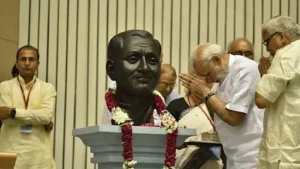
- Pandit Deendayal Upadhyaya: Life and Legacy:
-
- Pandit Deendayal Upadhyaya was born on September 25, 1916, in Mathura, Uttar Pradesh.
- He was a co-founder of the Bharatiya Jana Sangh (BJS), the forerunner of the Bharatiya Janata Party (BJP).
- Upadhyaya was also one of the key thinkers of the Rashtriya Swayamsevak Sangh (RSS).
- Deendayal Upadhyaya first started the monthly Rashtra Dharma from Lucknow in the 1940s, meant for spreading the ideology of Hindutva nationalism.
- He also started the weekly Panchjanya and then the daily Swadesh.
- He also wrote a Hindi drama on Chandragupta Maurya, a biography of Shankaracharya, and translated a Marathi biography of Hedgewar.
- He championed the philosophy of integral humanism, focusing on individual and collective welfare, social justice, economic equality, and self-reliance.
- Upadhyaya passed away near Mughalsarai in 1968, and in 2018, the Mughalsarai Junction railway station was renamed Deen Dayal Upadhyaya Junction in his honour.
-
- Government Initiatives in Honour of Upadhyaya:
-
- In 2014, Prime Minister Narendra Modi declared September 25 a national observance to commemorate Upadhyaya’s contributions to Indian society.
- The Ministry of Rural Development restructured the Aajeevika Skills program under the National Rural Livelihood Mission (NRLM), renaming it Deendayal Antyodaya Yojana (NRLM) in November 2015.
-
Read also: Weather Forecasting in India: Accurate Predictions | UPSC
Fjord
- News: A massive landslide in a Greenland fjord triggered a wave that “shook the Earth” for nine days.
- Fjord:
-
- A fjord is a long, deep, narrow body of water that extends far inland.
- Typically set within a U-shaped valley with steep rock walls on either side.
- Fjords are primarily found in countries like Norway, Chile, New Zealand, Canada, Greenland, and the U.S. state of Alaska.
-
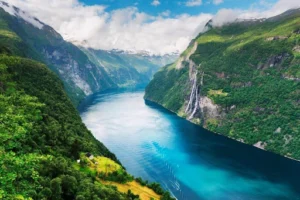
- Formation of Fjords:
-
- Shaped over multiple ice ages by slow-moving glaciers.
- As glaciers moved, they eroded the top layers of ice and sediment below.
- Melting waters contributed to carving into the land, making many fjords deeper than the seas that feed them.
- At the fjord’s mouth (where it meets the sea), glaciers often left behind shallow rock deposits like shill or shoal.
- These shallow mouths result in fast-moving water, including strong currents and saltwater rapids.
- Fjords are usually deeper in their middle and upper parts compared to their seaward ends due to more powerful glacier movement near their source.
-
- Unique Features:
-
- Coral reefs and rocky islands, known as skerries, are commonly found in fjords.
- Fjords have shallow thresholds, leading to stagnant water at their bottoms, which is often rich in black mud containing hydrogen sulfide.
-
- Epishelf Lakes:
-
- Some fjords contain epishelf lakes, formed when freshwater from melted ice becomes trapped beneath a floating ice shelf.
- The freshwater floats on top of the saltwater, without mixing.
-
UPSC GS 2
Summit of the Future 2024
- News: Prime Minister Narendra Modi recently addressed the UN Summit of the Future in the US.
- Key Points:
- Theme: ‘Multilateral Solutions for a Better Tomorrow’.
- Global Peace and Development Vision:
-
- India’s significant role in promoting global peace, development, and prosperity was emphasized.
- The Prime Minister underscored India’s human-centric approach to building a brighter future for the world.
-
- Sustainable Development Achievements:
-
- India successfully lifted 250 million people out of poverty in the last decade, demonstrating its achievements in sustainable development.
-
- Solidarity with the Global South:
-
- The Prime Minister reiterated India’s solidarity with the Global South, supporting shared development goals.
-
- Safe and Responsible Use of Technology:
-
- India called for balanced regulations for the safe and responsible use of technology.
- India offered its digital public infrastructure for global use, promoting greater public good.
-
- Commitment to ‘One Earth, One Family, One Future’:
-
- India reaffirmed its dedication to the principle of “One Earth, One Family, One Future”, aiming to create a sustainable and inclusive future.
-
- Call for Global Governance Reform:
-
- The Prime Minister urged urgent reforms in global governance institutions, including the UN Security Council, to keep them relevant.
- Emphasis was placed on aligning global actions with ambitions to meet contemporary and future challenges.
-
- Summit Outcome:
-
- The Summit concluded with the adoption of an outcome document titled ‘A Pact for the Future’.
- Two annexes were included: Global Digital Compact and Declaration on Future Generations.
-
- About the Summit of the Future:
- Organized by:
-
- The Summit of the Future is organized by the United Nations (UN) to address global challenges and advocate for long-term multilateralism.
-
- Objectives:
-
- The summit aims to shape a more equitable, resilient, and sustainable global future.
- It addresses crucial global issues like climate change, peace and security, technology, and sustainable development.
-
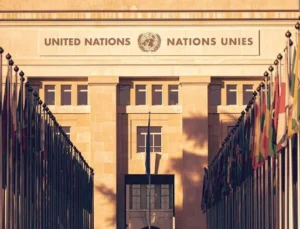
- Purpose:
-
- Strengthening global cooperation and reforming international systems to effectively tackle modern-day challenges.
-
- Goals:
-
- The summit focuses on reducing inequalities and enhancing resilience against global crises, including pandemics, climate change, and economic instability.
-
- Participants:
-
- The summit involves heads of state, government leaders, international organizations, civil society members, academics, and the private sector.
-
UPSC GS 3
‘Sustainability in Spice Sector through Progressive, Innovative and Collaborative Interventions for Export Development’ SPICED Scheme
- News: The Spices Board, Ministry of Commerce and Industry, has launched the SPICED Scheme aimed at significantly enhancing the export of spices.’
- Objective: The SPICED Scheme aims to boost the export of spices and value-added spice products, improve cardamom productivity, and upgrade post-harvest quality for export purposes across India.
- Implementation Period: It will be implemented during the 15th Finance Commission period, up to 2025-26.
- Key Highlights of the Scheme
-
- Value Addition and Innovation: The scheme focuses on value addition and promotes innovation and sustainability within the spice sector.
- New sub-components include:
- Mission Value Addition
- Mission Clean and Safe Spices
- Promotion of Geographical Indication (GI) spices
- Support for entrepreneurship through Spice Incubation Centres.
- Focus on Farmer Groups and SMEs: Special attention will be given to farmers’ groups, FPOs, and farmer clusters identified under initiatives like ODOP (One District One Product) and DEH (District Export Hub).
- Additional focus on SC/ST communities, exporters from the North-East region, and Small and Medium Enterprises (SMEs).
-

- Eligibility and Assistance:
-
- Exporters’ Eligibility: Exporters with a valid Certificate of Registration as Exporter of Spices (CRES) can avail assistance under the scheme.
- Preference: Priority will be given to first-time applicants, SMEs, and other emerging exporters.
-
- Empowerment of Farmer Groups:
-
- Specific Programs for Farmers: Programs focused on improving cardamom productivity and post-harvest quality of spices are aimed at empowering farmer groups such as:
- Farmer Producer Organizations (FPOs)
- Farmer Producer Companies (FPCs)
- Self-Help Groups (SHGs).
- Targeted Assistance: These groups will receive targeted assistance to enhance the post-harvest quality of spices and create an exportable surplus in compliance with food safety and quality standards.
-
- Transparency and Monitoring:
-
- Geo-tagging of Activities: All scheme activities will be geo-tagged.
- Transparency: Information on fund availability, application status, and beneficiary lists will be published on the Board’s website to ensure transparency.
-
Telescopes
- News: It has been in the news.
- Definition:
-
- A telescope is a tool that astronomers use to see faraway objects. Most telescopes, and all large telescopes, work by using curved mirrors to gather and focus light from the night sky.
- The mirrors or lenses in a telescope are called the “optics.”
- The bigger the mirrors or lenses, the more light the telescope can gather. Light is then concentrated by the shape of the optics.
-
- Types of Telescopes:
- Reflecting Telescope:
-
- A telescope that uses mirrors is called a reflecting telescope.
- Uses a concave mirror to focus incoming photons at a focus point.
- Produces a real, inverted, and smaller image.
- Most contemporary telescopes are reflecting telescopes.
- In a reflecting telescope, rays reflected by the primary mirror are diverted to a secondary mirror, which reflects them into an eyepiece with a small lens to enhance the image.
- Mirrors are better than lenses as it is much easier to make a large, near-perfect mirror than to make a large, near-perfect lens. Also, since mirrors are one-sided, they are easier than lenses to clean and polish.
- Moreover, mirrors are not heavy. Since they are much lighter than lenses, mirrors are a lot easier to launch into space.
-
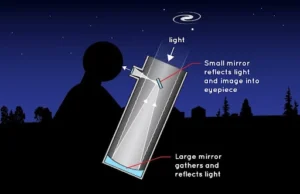
- Refracting Telescope:
-
- A telescope made with lenses is called a refracting telescope.
- It uses lenses to bend light and create an image directly.
- It requires large lenses to observe far away objects, but the size is limited as big lenses very heavy. Heavy lenses are also hard to make and difficult to hold in the right place.
- The world’s largest refracting telescope is at Yerkes Observatory in the U.S. with a 1.02-m lens.
-
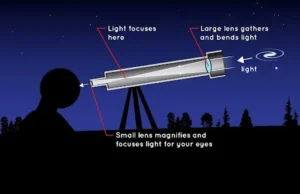
- Advanced Telescopes Around the World
-
- Large Binocular Telescope (LBT):
- The world’s largest telescope, located at Mount Graham International Observatory in Arizona, USA.
- Extremely Large Telescope (ELT):
- Under construction in the Atacama Desert, Chile, part of the European Southern Observatory.
- It has five mirrors and a combined aperture of 39.3 m.
- Subaru Telescope:
- An 8.2-m Japanese telescope at the Mauna Kea Observatory, Hawaii.
-
Epigenetics
- News: Epigenetics plays a critical role in human health by regulating gene expression without the direct modification of DNA sequence.
- Introduction to Epigenetics:
-
- Definition: Epigenetics is the study of how cells regulate gene activity without altering the DNA sequence.
- Term Origin: The prefix “Epi-” comes from Greek, meaning “on” or “above,” signifying that epigenetic factors act beyond the genetic code.
-
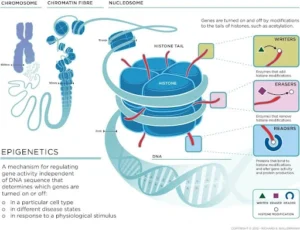
- Epigenetic Modifications:
-
- Nature of Modifications: These are changes to DNA that control whether genes are switched on or off, without altering the DNA sequence itself.
- Attachment to DNA: Epigenetic modifications attach to DNA but do not change its building blocks.
-
- The Epigenome:
-
- Definition: The complete set of DNA in a cell, along with all the modifications that regulate gene activity, is known as the epigenome.
- Function: These modifications influence gene expression, determining whether a gene is active or inactive.
-
- Role of Epigenetic Changes in Cells:
-
- Protein Production: Epigenetic changes ensure that cells produce only the proteins necessary for their specific functions.
- Example: Bone growth proteins are not produced in muscle cells.
- Variation: Patterns of epigenetic modifications differ between individuals, tissues within an individual, and even cells within the same tissue.
-
- Environmental Influences on the Epigenome:
-
- External Factors: Environmental elements, such as diet and exposure to pollutants, can impact the epigenome, affecting gene expression.
-
- Inheritance of Epigenetic Changes:
-
- Cell Division: Epigenetic modifications can be passed from one cell to another as cells divide.
- Generational Inheritance: In some cases, epigenetic changes can be inherited across generations.
-
- Epigenetic Errors:
-
- Errors in Process: Mistakes in the epigenetic process, such as modifying the wrong gene or failing to add a chemical group to a gene or histone, can lead to abnormal gene activity or inactivity.
- Impact on Health: Altered gene activity due to epigenetic errors is often linked to genetic disorders.
-
- Conditions Linked to Epigenetic Errors:
-
- Associated Disorders: Diseases such as cancers, metabolic disorders, and degenerative conditions are commonly related to epigenetic errors.
-
Integrated Development of Wildlife Habitats
- News: The Cabinet recently approved continuation of the Centrally Sponsored Scheme of Integrated Development of Wildlife Habitats for the 15th Finance Commission cycle.
- Overview:
-
- The Integrated Development of Wildlife Habitat Scheme is a Centrally Sponsored Scheme launched by the Ministry of Environment, Forest, and Climate Change.
- It was operationalized by expanding the components and activities of the earlier scheme “Assistance for the Development of National Parks and Sanctuaries” during the 11th Plan Period.
- The scheme aims to enhance technological interventions in tiger and other wildlife habitats over the current and upcoming financial year.
- It benefits 55 tiger reserves, 33 elephant reserves, and 718 protected areas along with their zones of influence.
-
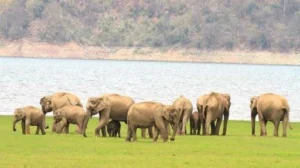
- Components of the Scheme:
-
- Support to Protected Areas: National Parks, Wildlife Sanctuaries, Conservation Reserves, and Community Reserves.
- Protection of Wildlife Outside Protected Areas.
- Recovery Programs: Focuses on saving critically endangered species and habitats.
-
- Sub-components of IDWH:
-
- Project Tiger:
- Aims to ensure a viable population of the Bengal tiger (categorized as ‘endangered’) in its natural habitats.
- Works to protect tigers from extinction.
- Includes support for Project Cheetah.
- Project Elephant:
- Focuses on the conservation of elephant populations and their habitats.
- Seeks to reduce human-elephant conflicts.
- Aims to improve the welfare of captive elephants.
- Development of Wildlife Habitat: Includes Project Dolphin and Project Lion, aimed at conserving these species and their respective habitats.
-
Barak Bhuban Wildlife Sanctuary
- News: The National Green Tribunal (NGT) has ordered a stay on construction of a road inside the Barak Bhuban Wildlife Sanctuary in Assam’s Cachar district.
- Location:
-
- It is situated in Assam’s Barak Valley, which also houses the Borail Wildlife Sanctuary.
- Nestled between the Barak and Sonai rivers.
- Spans across three districts: Cachar, Hailakandi, and Karimganj.
- Named after the second-largest river in Northeast India, the Barak River.
-
- Fauna: Slow loris, rhesus macaque, pig-tailed macaque, king cobra, stump-tailed macaque, Assamese macaque, capped langur, phayre’s leaf monkey, and hoolock gibbon.
- Barak Valley – Key Facts:
-
- Location: Southern part of Assam.
- Naming: Named after the Barak River, the largest in the valley and the second largest in Northeast India.
-
- Borders:
-
- Shares borders with Meghalaya to the north, Manipur to the east, Tripura and Mizoram to the south.
- Flanked by the transnational boundary of Bangladesh in the south.
-
- Biodiversity:
-
- Part of the Indo-Myanmar biodiversity hotspot.
- Around 4.8% of the valley’s area is covered by tea plantations, while the remaining hilly areas are either home gardens or reserve forests.
-
- Vegetation:
-
- Includes tropical evergreen, semi-evergreen, tropical deciduous, and secondary forests.
- Extensive rainforests are found in the northern and southeastern parts of the valley.
-
- Climate:
-
- The region experiences a subtropical, warm, and humid climate.
-

